German PMI manufacturing dropped to 58.4 in March, down from 60.6, below expectaiton of 59.8. That’s an 8-month low.
German PMI services dropped to 54.2 in March, down from 55.3 and missed expectation of 55.0. That’s a 7-month low.
Here is the full release: Germany PMI drops to eight-month low in March.
Quote from Phil Smith, Principal Economist at IHS Markit:
“Growth in Germany’s private sector has pulled back sharply since the start of the year, with the pace of expansion in March well below January’s near seven-year high.
“However, with the strong expansions seen at the end of last year and in the opening months of 2018 already baked in, official numbers are expected to show robust GDP growth in the opening quarter. Latest IHS Markit forecasts show growth picking up from the somewhat disappointing 0.6% seen in the fourth quarter of 2017.
“Interestingly, the survey’s anecdotal evidence also found an unusually high prevalence of staff sickness affecting business activity, to suggest that the extent of the slowdown in March might be partly due to temporary factors.
“It is manufacturing that has lost the most momentum, with growth in goods production slowing particularly sharply to its weakest since the start of 2017. The headline manufacturing PMI, however, is somewhat supported by the suppliers’ delivery times component, which has hit a fresh record-low – its third in the past four months.
“Capacity pressures remain a theme, with firms noting not only bottlenecks in supply chains but also a solid and accelerated increase in backlogs of work. This bodes well for strong job creation continuing in the months ahead.”




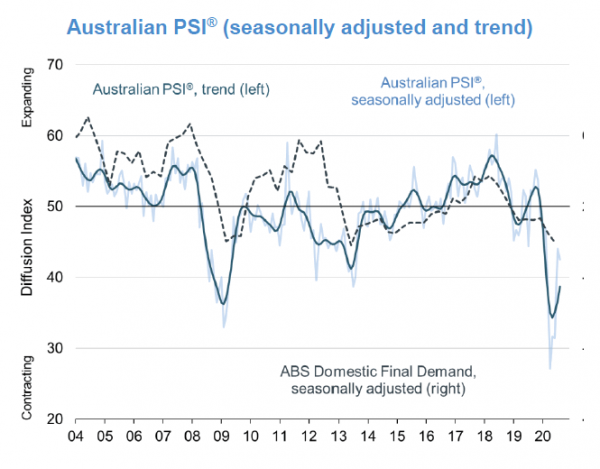
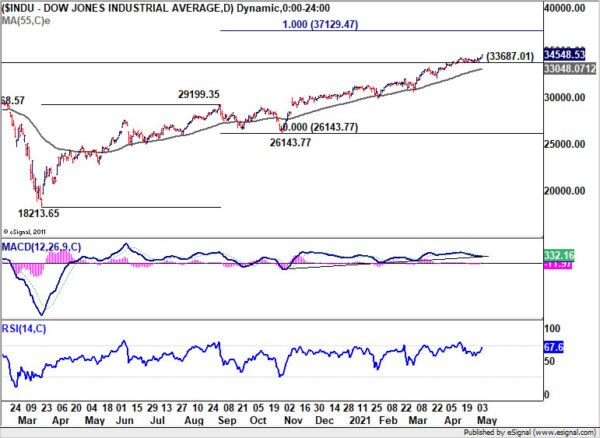
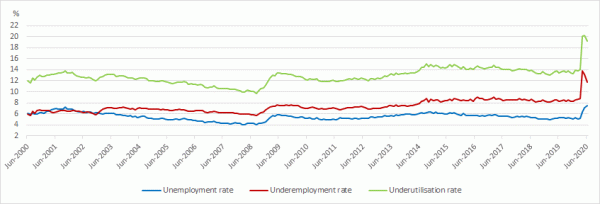
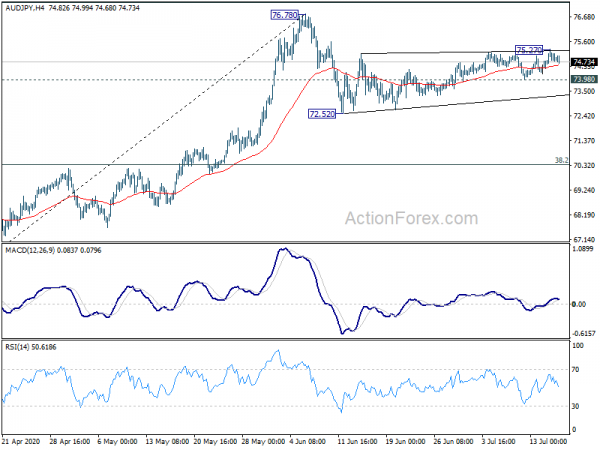
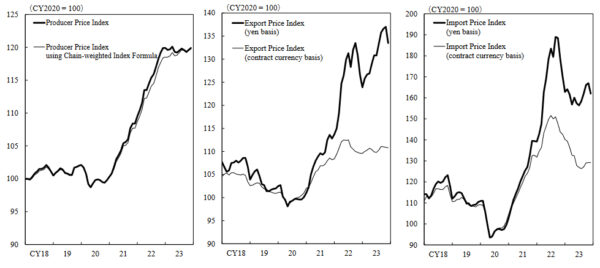
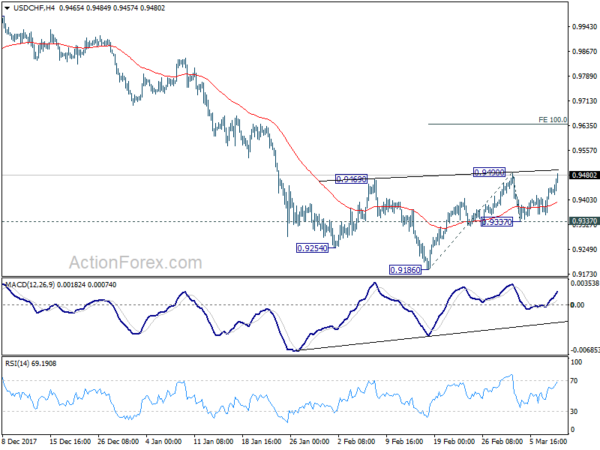
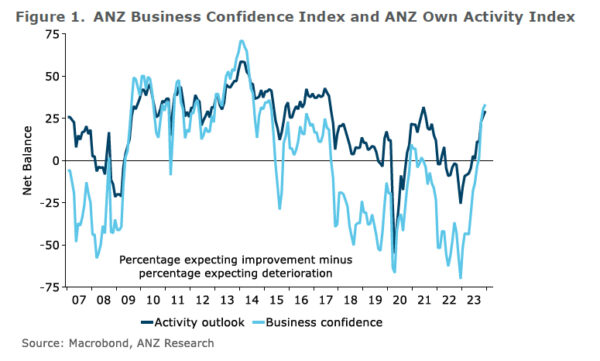
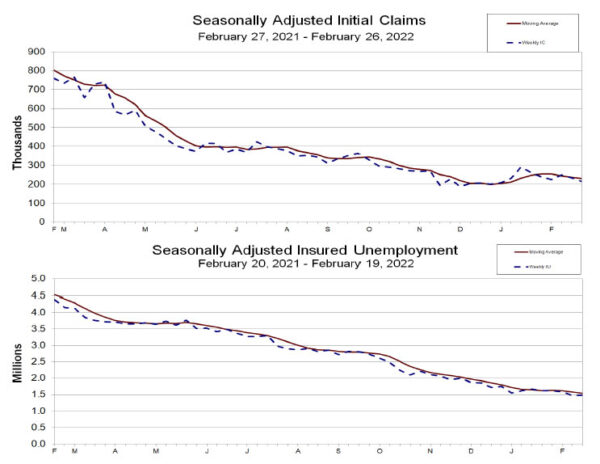
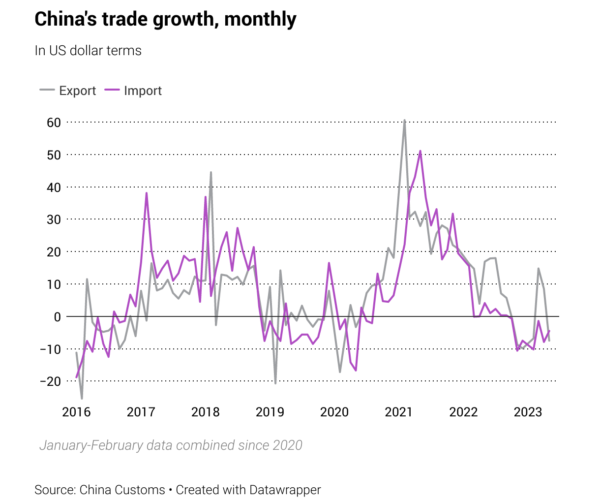

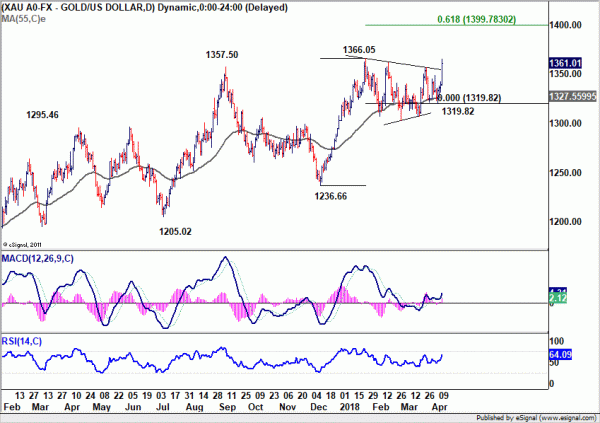
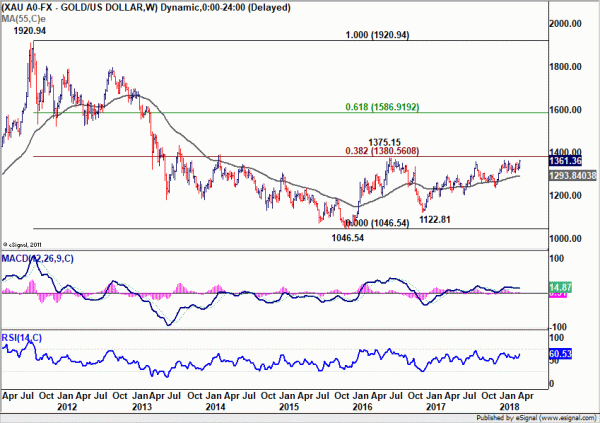

Australian Dollar lifted by large trade surplus and surge in building approvals
AUD trades broadly higher today and it’s still extending the rally at the time of writing. Solid economic data provide some support. Technically, though, AUD remains in down trend against USD and CAD despite the rebound.
Australia trade surplus came in at AUD 1.53B in March, widened from AUD 1.35B in February. That’s also much larger than expectation of AUD 0.68B. Exports jumped 1% to AUD 34.84B, with strong 8% growth in n non-monetary gold to AUD 131m. Imports rose 1% to AUD 33.31B,. Non-monetary gold imports jumped 28% to AUD 232m.
Building approvals rose 2.6% mom in Mach, much higher than expectation of 1.0% mom. Justin Lokhorst, Director of Construction Statistics at the ABS noted that “the strength in the total dwellings series is being driven by approvals for private sector houses, which have now risen for 13 consecutive months.” And, “private sector house approvals are now at their highest level since 2003, in trend terms.”
AUD/USD is trying to draw support from 0.7500 key level for the moment. While it’s firm elsewhere, AUD/USD needs to break through 0.7583 minor resistance to confirm short term bottoming. Otherwise, near term outlook will remain bearish.